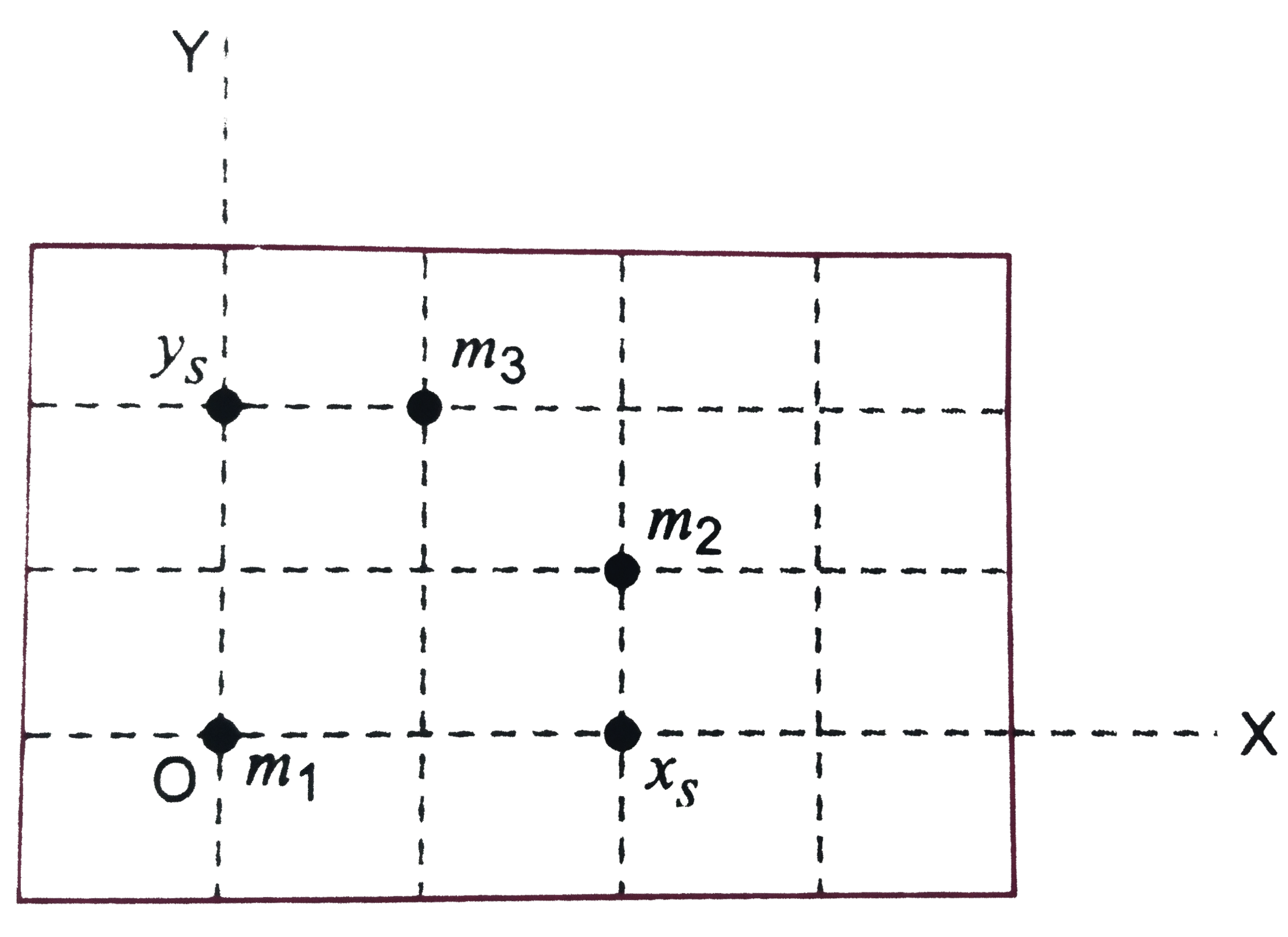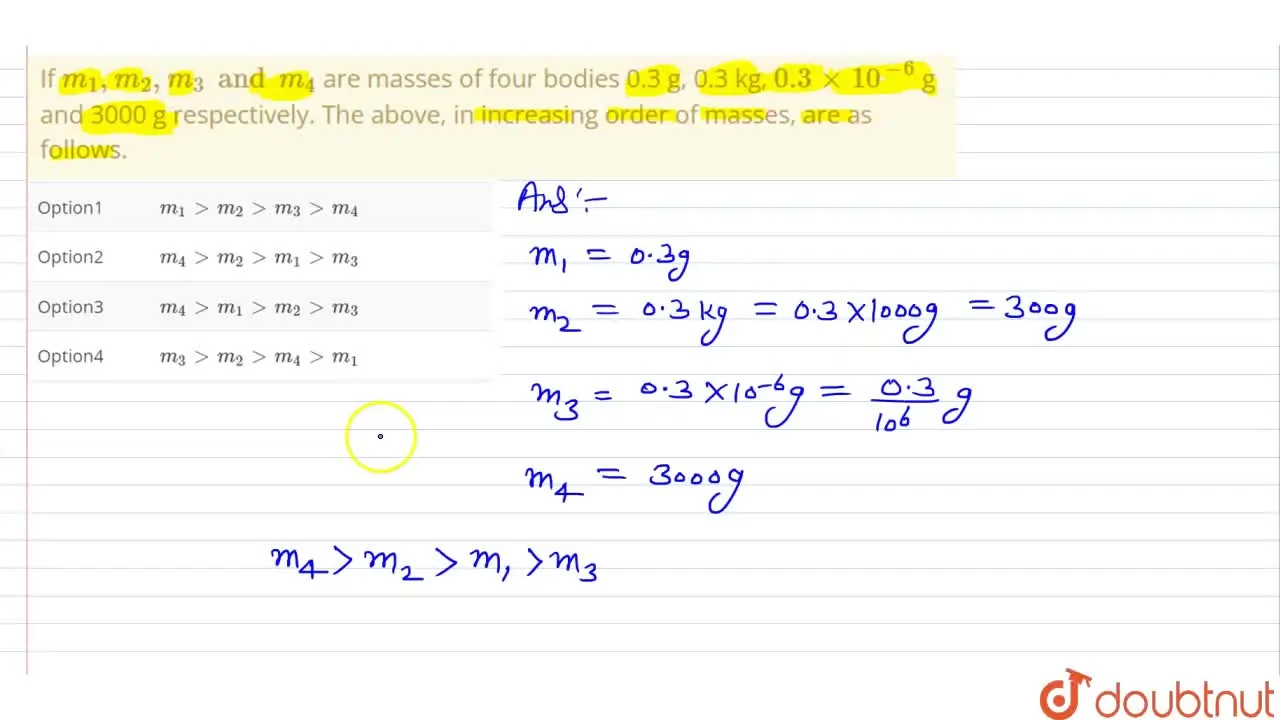If are masses of four bodies 0.3 g, 0.3 kg, g and 3000 g respectively. The above, in increasing order of masses, are as follows.
Step by step video & image solution for If m_(1),m_(2),m_(3)andm_(4) are masses of four bodies 0.3 g, 0.3 kg, 0.3xx10^(-6) g and 3000 g respectively. The above, in increasing order of masses, are as follows. by Physics experts to help you in doubts & scoring excellent marks in Class 6 exams.
Related Playlists
- BOOK - BEIITIANSCHAPTER - MEASUREMENT EXERCISE - IIT JEE WORKSHEET ( SINGLE CORRECT ANSWER TYPE)7videos
MEASUREMENT
- BOOK - BEIITIANSCHAPTER - MEASUREMENT EXERCISE - IIT JEE WORKSHEET ( SINGLE CORRECT ANSWER TYPE) FILL IN THE BLANKS.1videos
MEASUREMENT
- BOOK - BEIITIANSCHAPTER - MEASUREMENT EXERCISE - SUMMATIVE WORKSHEET10videos
MEASUREMENT
- BOOK - BEIITIANSCHAPTER - MAGNETISMEXERCISE - IIT JEE Worksheet (Matrix Matching)4videos
MAGNETISM
- BOOK - BEIITIANSCHAPTER - MOTION & FORCEEXERCISE - IIT JEE WORKSHEET (II. MULTIPLE CORRECT ANSWER TYPE)2videos
MOTION & FORCE
Similar Questions
If m1,m2,m3 and m4 are masses of four bodies 0.3 kg, 0.3 mg, 0.3×10−6g nad 3000 g respectively. The above in increasing order of masses are as sollows
View SolutionTwo bodies of mass 2 kg and 5 kg have position (1 m, 2 m, 1 m) and (3 m, 2 m, -1 m) respectively. The position vector of centre of mass is
View SolutionThree blocks I,II, & III having mass of 1.6kg, 1.6kg and 3.2kg repectively are connected as shown in the figure. The linear mass density of the wire AB,CD and DE are 10g/m,8g/m and 10g/m respectively. The speed of a transverse wave pulse produced in AB,CD and DE are : (g=10m/sec2)
 View Solution
View SolutionThe centres of three spherical masses of 1 kg, 2 kg and 3 kg have co-orinates (4,0) m,(0,3)m and (-2,5)m respectively. What is the position vector of its centre of mass is terms of its x and y co-ordinates?
View SolutionThe mass of a body is 20.0 g and its volume is 10.0cm3. If possible maximum errors in the measurement of mass of body and volume of body are 0.001 g and 0.01cm3 respectively, then the maximum error in the value of density is
View SolutionAt 800 K in a sealed vessel for the equilibrium N2(g)+O2(g)⇔2NO(g), the equilibrium concentrations of N2(g),O2(g) and NO(g) are respectively 0.36×10−3M,4.41×10−3Mand1.4×10−3M. Calculate the value of Kc for the reaction NO(g)⇔1/2N2(g)+1/2O2(g)at800Kis:
View SolutionThe measured mass and volume of a body are 22.42g and 4.cm3, respectively, with possible errors of 0.01g and 0.1cm3. The maximum error in density is
View SolutionFig. shown a three particle system with masses m1=3.0kg,m2=4.0kg and m3=8.0kg. The scales on the axes are set by xs=2.0m and ys=2.0m. What are the co-ordinates of centre if mass ? If m3 is gradually increased, does the centre of mass of the system shift towards or away from that particle or does it remain stationary ?
 View Solution
View SolutionA mass of 1 kg is placed at (1m, 2m, 0). Another mass of 2 kg is placed at (3m, 3m, 0). Find the moment of inertial of both the masses about z-axis
View Solution10 kg m−3 =____g cm−3
View Solution


